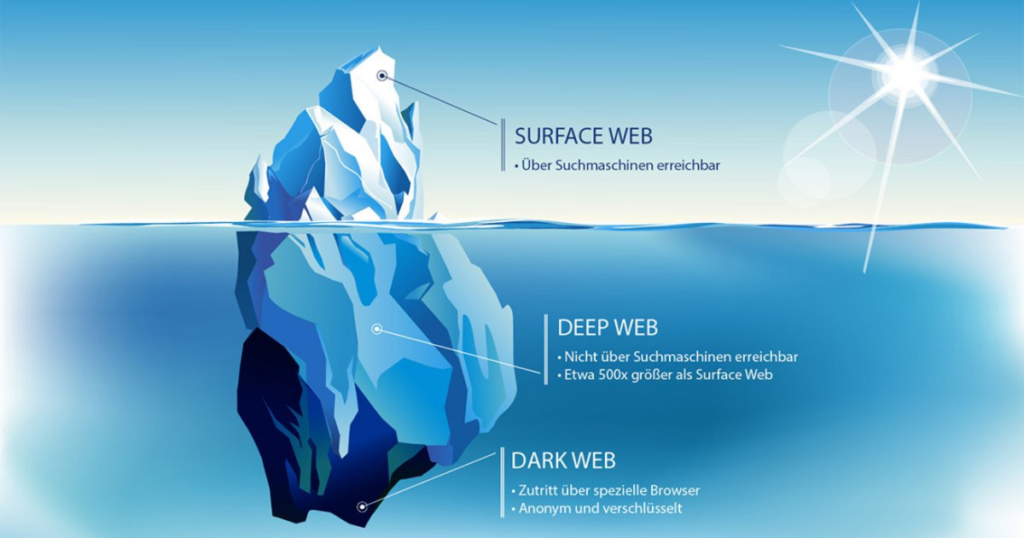Introduction
The internet is vast, but what most of us see is only a small fraction of what exists. Beneath the familiar surface web lies the deep web, and within it, a shadowy corner known as the dark web. Shrouded in mystery, the dark web has gained a reputation for being a haven for illegal activities. However, there is more to it than just cybercrime. This article explores what the dark web really is, how it works, and the truths and myths surrounding it.
What Is the Dark Web?
The dark web is a part of the internet that isn’t indexed by standard search engines like Google or Bing. It requires specialized software, such as The Onion Router (Tor) or I2P, to access. Unlike the surface web, where websites are easily found and accessible, the dark web operates in anonymity, making it a hotspot for privacy advocates, journalists, and, unfortunately, criminals.
How the Dark Web Works
The dark web uses anonymization tools to hide users’ identities and locations. The most commonly used tool, Tor, encrypts internet traffic and routes it through multiple servers worldwide, making it nearly impossible to trace users.
Key Features of the Dark Web:
- Anonymity: Users and website operators remain anonymous.
- Hidden Services: Websites have .onion domains, accessible only via Tor.
- Encrypted Transactions: Cryptocurrencies, especially Bitcoin and Monero, are often used for transactions.
- No Centralized Control: Unlike the surface web, there is no governing body regulating the dark web.

What Really Happens on the Dark Web?
The dark web has both legitimate and illicit uses. While it is often associated with illegal activities, it also provides a refuge for those who need privacy.
1. Legitimate Uses
- Whistleblowing and Journalism: Platforms like SecureDrop allow whistleblowers to share sensitive information anonymously with journalists.
- Privacy Protection: Citizens in oppressive regimes use the dark web to bypass censorship and communicate freely.
- Research and Discussions: Academics and researchers use dark web forums to discuss topics that might be restricted elsewhere.
2. Illegal Activities
Despite its legitimate uses, the dark web is infamous for illicit transactions and cybercrime. Some of the illegal activities include:
- Black Markets: Websites like Silk Road (now shut down) sold drugs, weapons, and counterfeit documents.
- Hacking Services: Cybercriminals offer hacking tools, stolen data, and malware for sale.
- Illegal Pornography and Exploitation: Some dark web sites host disturbing and illegal content, leading to major law enforcement operations.
- Fraud and Identity Theft: Stolen credit card information, fake passports, and counterfeit currency are sold in underground marketplaces.
The Role of Law Enforcement
Authorities worldwide have taken significant steps to crack down on dark web crime. Operations like “Operation Onymous” and “Darknet Marketplace Seizures” have led to the shutdown of major illegal marketplaces. However, the decentralized and anonymous nature of the dark web makes it difficult to completely eradicate criminal activities.
Myths and Misconceptions About the Dark Web
There are many myths surrounding the dark web, often fueled by movies and sensationalized media reports. Let’s debunk some of them:
- Myth: Everything on the dark web is illegal.
- Reality: While illegal activities exist, many users access it for privacy and security reasons.
- Myth: The dark web is impossible to monitor.
- Reality: Law enforcement agencies actively track and shut down illicit activities.
- Myth: Only criminals use the dark web.
- Reality: Journalists, activists, and researchers also rely on it for secure communication.
The Future of the Dark Web
As technology advances, the dark web will continue to evolve. Governments, cybersecurity firms, and researchers are working on better ways to monitor and regulate dark web activities while preserving its role in protecting privacy and freedom of speech. The balance between security and privacy remains a critical debate.
Conclusion
The dark web is neither entirely good nor entirely evil. It is a tool that, like any technology, can be used for both positive and negative purposes. While it provides a sanctuary for privacy advocates and journalists, it also serves as a hub for cybercriminals. Understanding its true nature helps demystify the dark web and highlights the importance of ethical digital practices and cybersecurity awareness. As we continue to navigate the complexities of the internet, being informed about the hidden layers of the web is essential for both security and knowledge.